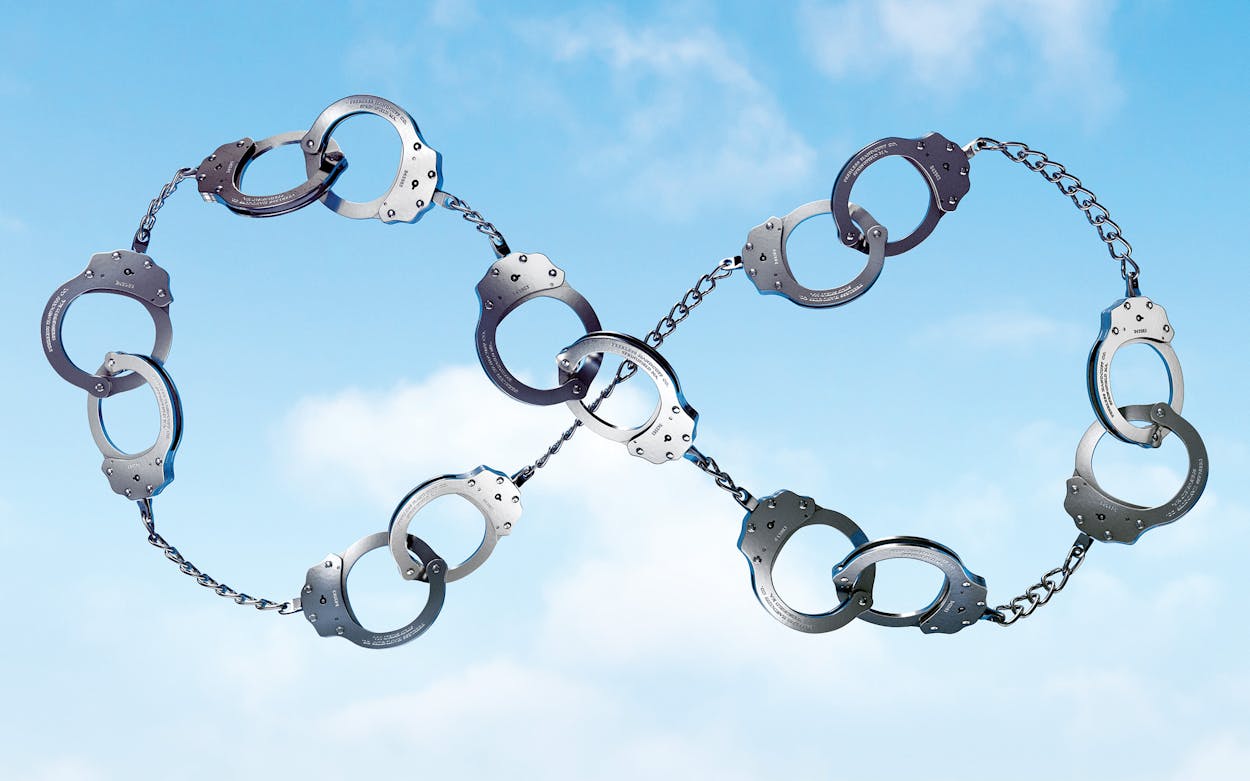The Texas frontier was a lawless place, so the early waves of white settlers dealt with suspected wrongdoers the way the Old Testament told them to. Even as other states found alternatives to the lash, Texas—whose prison system had its roots in the East Texas cotton fields and the convict-leasing apparatus that replaced slavery—didn’t back down from “an eye for an eye.” For years our elected officials—sheriffs, district attorneys, judges, and governors—have won office by promising to be tough on crime. The most infamous metric for this is that we’re the number one state in executions. Since 1976, when the Supreme Court declared the death penalty was once again constitutional, we’ve killed nearly five times more convicts than Oklahoma, our nearest competitor. (Our northern neighbor, however, executes more prisoners per capita than we do; we’re number two by that measure.)
But we’re also the leader when it comes to living, breathing subjects of the criminal justice system: no state has more inmates than Texas. (Though, again, on a per capita basis we don’t come out on top; we’re number ten, behind some much smaller states.) We weren’t always number one; California, with a far bigger population, used to outdo us. Then in the nineties, Governor Ann Richards led an expansion of prisons and a tightening of parole rules that pushed us into the top spot. Between 1993 and 1998 the population of our state prisons, state jails, and private facilities more than doubled, to 143,889—more than the entire population of Waco. Ten years later we reached 156,126 inmates. Yet, as crime rates fell, so did those numbers, aided, to the surprise of many, by conservative politicians affiliated with the Texas Public Policy Foundation’s Right on Crime initiative, which framed prison issues as economic issues. Texas began sending nonviolent inmates to community-based programs designed to divert them from future crimes, and it started closing prisons, not building new ones. Then, during the pandemic, law enforcement curtailed arrests, the court system slowed down its processing, and TDCJ took fewer transfers from county lockups. By April 2021 Texas had 116,926 inmates in its prisons.
But now, as society is getting back to normal, our numbers are climbing once again. As of January, Texas had 124,893 inmates. California, with 10 million more residents, had about 29,300 fewer inmates. And this is all part of a much larger web. Texas has more inmates in “administrative segregation”—solitary confinement in all but name—than any other state, more than 3,000. And our numbers are shockingly high when it comes to prisons without air-conditioning, incidents of prison rape, and unpaid inmate labor.
None of these changes take into account our 252 county jails, where, by some accounts, on average more than 60,000 men and women await a trial, a plea bargain, or a transfer to state prison. This number could very well go up: In the fall, the Legislature will take up two bills that, if passed, could keep more Texans behind bars in local jails. One would put on the ballot a constitutional amendment denying bail for certain violent offenses (such as aggravated sexual assault), and another would prohibit personal bonds for some other serious crimes. We already have an astonishingly large number of inmates serving time for crimes they were convicted of committing. Now we’re on the cusp of putting more defendants behind bars who haven’t been convicted of anything.
This article originally appeared in the September 2023 issue of Texas Monthly with the headline “When It Comes to People Behind Bars, We’re Way Ahead.” Subscribe today.
- More About:
- Politics & Policy
- Prisons









